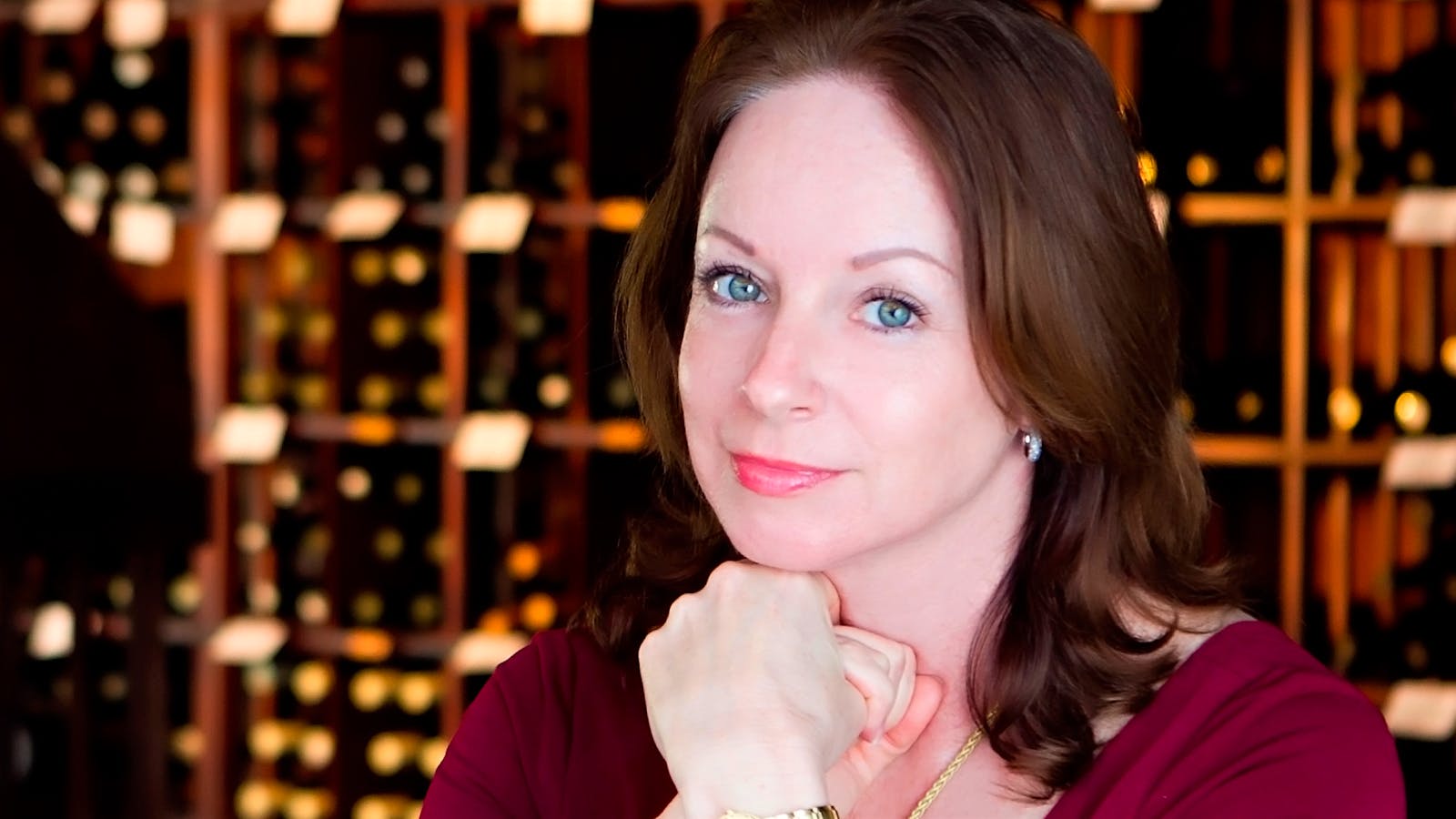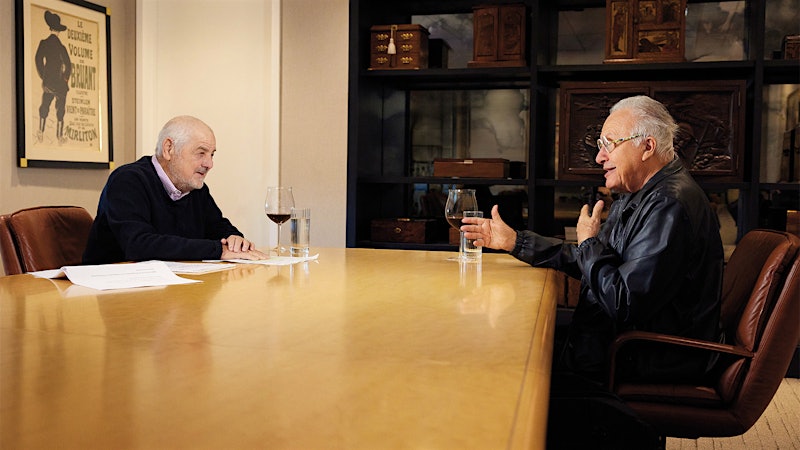Virginia Philip manages all 12 wine programs at one of the world's icons of luxury, The Breakers hotel, including its 34-time Wine Spectator Grand Award–winning flagship restaurant, formerly L'Escalier and now HMF. But when asked if she ever gets nervous around her peers in the wine world, she laughs. “All the time,” she says. “When it comes to meeting some of these winemakers, you’re like a kid again.”
Philip’s introduction to wine, in fact, did come as a child, when her father would let her have sips mixed with water on special occasions. “It stuck with me,” she says. When it came time for college, she chose a path in hotel and restaurant management at Johnson & Wales, which awarded her an honorary doctorate in enology in 2015. After college, Philip took on a role at the Little Nell in Aspen, Colo., and went on to manage wine at other restaurants and stores.
In 1999, when her twin sister got married at The Breakers, Philip decided to interview at the resort, and she's been there since. A Master Sommelier since 2002, she has built the crowning list at HMF to 1,800 selections, with strengths in Burgundy, Bordeaux, Champagne, California and Italy, and also oversees Best of Award of Excellence–winner Flagler Steakhouse on the property. In 2011, Philip fulfilled a longtime dream to open her own store: the Virginia Philip Wine Shop & Academy. Philip sat down with editorial assistant Sara Heegaard to discuss pairing with eclectic cuisines, the importance of mentorship and building a wine cellar for the next generation.
Wine Spectator: HMF used to be L’Escalier, a traditional French dining experience that was overhauled in 2013. Now, you offer high-end iterations of “food truck” favorites like wild boar empanaditas and Hong Kong dumplings alongside the classics. What was the process for reconceptualizing the wine list to complement a globally diverse menu centered around small plates and by-the-glass pours?
Virginia Philip: For the food, we added sake for the sushi and put a bit of a spin on some of our by-the-glass pours to match the food. For example, traditional Albariño or Randall Grahm's from California? Vintage Prosecco versus non-vintage Prosecco? With over 1,800 selections, we did not really need to revamp our [bottle] list very much. With so many different options to choose from, it was just a matter of highlighting those wines that made more sense for by-the-glass selections. The team and I thought about not only which wines would sell but be versatile enough to pair with a variety of dishes, as the menu is designed to share and experience tasting multiple small plates.
One of the first things we did was to increase the ounces we poured. We went from a 6-ounce pour—which is fairly generous to begin with—to a 7-ounce pour and a 3-ounce pour to a 3.5-ounce pour. The perception that the glass does not appear to be full with a 6-ounce pour was reason enough for the CEO of our company to request this change. We also backed away from [emphasis on expensive Champagne]. We wanted to test the waters to see if our clientele in this new environment would support it. We have found that a glass of bubbly in three options priced between $17 and $40 is our threshold in this new concept.
WS: How do you balance your own recommendations with guest preferences?
VP: It’s tough. You cannot build a wine list based upon your own personal preferences—it has to be based on what your guests are requesting. Interestingly enough, if a wine isn’t succeeding in one outlet, it could work in another outlet. We’ve got a Chilean Pinot Noir, for example, that we had brought into the U.S. for us—100 cases. We put it on the Seafood Bar’s menu and no one bought it. Guests wanted to buy the Oregon Pinot or the California Pinot over the Chilean. So we moved that wine to HMF and practically bowled through it in two and a half, three months. It just depends.
WS: Being in Florida, seafood is obviously a big part of the cuisine. Do you have a favorite seafood and wine pairing at the moment from the menu at HMF?
VP: The sea bass is amazing, particularly with the Domaine Leroy Meursault Les Poruzots 1966—but I think any Meursault or Chassagne-Montrachet or any Chardonnay with some minerality works beautifully with that dish.
WS: What do you suggest when a guest requests a red wine recommendation to pair with their seafood?
VP: It depends on the fish, but we also usually try to recommend depending on the sauce preparation. Shiraz, Pinot, Grenache, Chianti, Rioja… If you’re doing a pompano and you sear it or grill it, it takes on a more crunchy texture, which in my mind means the dish can take a heavier wine such as a red. We don’t rule out rosé either, because it is extremely popular in south Florida and has been for a long time.
WS: HMF/L’Escalier has won a Grand Award every year since the award’s inception in 1981. What do you think has allowed the wine program to stand the test of time?
VP: Henry Warren started our program, and he was a visionary. He wasn’t building a list for today, or next week, or next month—he was building a list for 20, 30 years down the road. That’s what we continue to do today. Our 2009 Bordeaux futures are not on the list yet—they might go on the list this year, if not next year. We try and hold back when we can.
WS: You’ve been pouring wine at the New York Wine Experience for 14 years now. What keeps you coming back?
VP: Getting the chance to have the winemakers come back and being able to chat it up with them—and the camaraderie between the sommeliers is amazing, with the older and young generations working together.
WS: Have you ever had or been a mentor in the wine world? How important do you feel mentoring is to learning about wine?
VP: My mentor was Andrew Bell [cofounder and president of the American Sommelier Association]. When I was living in San Antonio, he and Roger Dagorn [veteran of acclaimed New York restaurants such as Chanterelle] sat me down and said, "Have you ever considered becoming a Master Sommelier?"
I think that being a mentor to other sommeliers is incredibly important. Juan Gomez is another Master Sommelier at HMF. He was my first assistant, and I trained him. We’ve been working together in this role for 14 years. He is the first and only person from Mexico to have passed the exam. For me, there is nothing more satisfying than to be able to take my experience and share it with people on my team.












